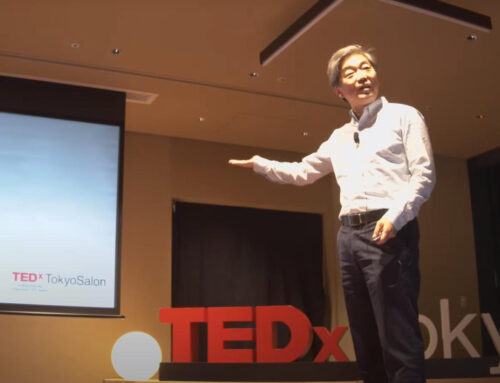In my second Op-Ed, I speak about the life lessons in “From Strength to Strength”, a book written by Arthur C. Brooks.
After a long two-years, Harvard Business School’s campus reopened and I was finally able to attend the 30th reunion for my Class of 1991. HSB reunions take place every year to facilitate the strengthening of old relationships, forging of new friendships and the sharing of lessons, inspirations and learnings about life. They’re one of the great benefits of being a Harvard alumni.
This year, there were many great lectures held and one of them was particularly memorable. It was about finding success, happiness and deep purpose in the second half of life. The lessons were from a book called, “From Strength to Strength” by Arthur C. Brooks.
Finding Your Second Curve
According to Brooks: “Professional decline is inevitable – but that isn’t a bad thing,”. I agree with him. I believe it’s always necessary to shake the tree. Basing true fulfilment on worldly success and rewards is a misconception everyone has to learn from. What once worked may not continue to work in the future. So true success often means knowing when to walk away.
I spent decades achieving “worldly” success as an executive for major companies around Asia, Europe and the United States before I found myself in my second curve of life. Today, I walk the path of a proud entrepreneur and a university professor. Rather than call it a decline though, I think it’s more about finding one’s purpose in life. I found mine in Kenja.
Two Types of Intelligence
Another interesting point was the idea that there are two types of intelligence. One is “fluid” intelligence which is most seen in younger people. The other is “crystallized” intelligence which is the wisdom that comes with age and experience. Some careers combine both and some don’t.
There were two relevant examples mentioned. One was regarding tech entrepreneurs as the line of work that relied mostly on fluid intelligence and had a career curve that matched the decline. Another was about college teaching. Professors relied on crystallized intelligence.
I strongly agree with these notions but more as a professor and less as a tech entrepreneur.
Over the years, I’ve noticed that the more experience I gain, the more crystallized intelligence I gather, the more wisdom I have to share with my students. It’s a simple formula that works.
As a tech entrepreneur, the formula is much more complex.
Fluid intelligence is needed in tech companies. That’s where innovation lies. But to run a successful tech company, crystallized intelligence is needed. It’s the wisdom of age and experience that allows a CEO of a tech company like myself to handle the business side of things and ensure longevity. So the best mix for a tech company is to have both types.
The fluid pushes for innovation while the crystallized weighs the pros and cons.
5 P’s of Life
There was also talk about the dangers of stubbornly holding onto the goals on a bucket list. People get blinded sometimes. Do I hold back because an opportunity doesn’t align with a goal I’ve set in my bucket list? Or do I take the chance? I managed to solve this problem by using a framework I teach my undergraduate and graduate students, called the “5 P’s of Life”.
The “5 P’s of Life” are passion, purpose, plan, partners, and persistence. It’s not about setting goals. It’s about having a framework to use as a guiding light in life, as a North Star. Using it forces a person to dig deeper into themselves, question their values and beliefs, and reflect fully on their identity. It puts things into perspective and keeps you on the path towards your goal.
But I’m not saying bucket lists are bad. Short-term goals are not bad. Celebrating short-term successes are equally important as celebrating bigger achievements. I actually celebrated a short-term goal myself during the reunion, which I’ll mention later. Short-term goals aren’t helpful when making big decisions though. Or when planning our path in life. That’s where the “5 P’s of Life” come in.
Great Ideas
Among the many other lectures held, there was one done by me. Many years back, my section mate, Asis Martin Jerez, wrote a case about the turnaround I achieved at Kansai Digital Phone. He couldn’t make it out this time so I actually led a mini case study for a bunch of alums using whiteboards. This was the short-term goal I ticked off at the reunion.
I think it was well-received and it gave the passionate professor in me deep satisfaction. I can also thank Asis for this mini-passion of mine. He encouraged me about 10 years ago to do my first teaching gig and I have been teaching at MBA schools ever since.
What I’m most passionate about though is my venture, Kenja. It’s a company focused on providing certification solutions for large enterprises and entities using blockchain. Example case study clients in production mode include a leading Japanese retailer ( developed alongside TÜV Rheinland) for CSR auditing at their factories abroad, as well as the large religious groups of Indonesia for Halal food certification.
Kenja has grown 10X, 2X, and 2X over the past few years. Now we are past the first stages of a small company and have about 50 people globally. It has been rewarding to see an idea through to early market adaption, and our path is pretty clear to scaling.
Cultivating Connections
Beyond the great lectures, what I enjoyed the most was mingling with everyone. The number of people I had good conversations with despite meeting for the first time took me by surprise. The discussions were intellectually stimulating and often went past my comfort zone. It was refreshing and I was engaged in a way that couldn’t compare with the talks at Davos.
Everyone was very welcoming and friendly without exception. I think we all expected to see smiles on each other’s faces and to connect with fellow section mates whenever we got together so it was a wonderful time. Connections there truly do last a lifetime and there is a reassuring quality to that.
Overall, the 30th reunion with my HSB Class of 1991 was fruitful. There were plenty of great lectures, many insights to learn, amazing new people to connect with, old friends to reconnect with, and a point on my bucket list crossed off. Now, it’s time to take in what I’ve learned, digest new ideas, and continue working on my main goal, Kenja.




